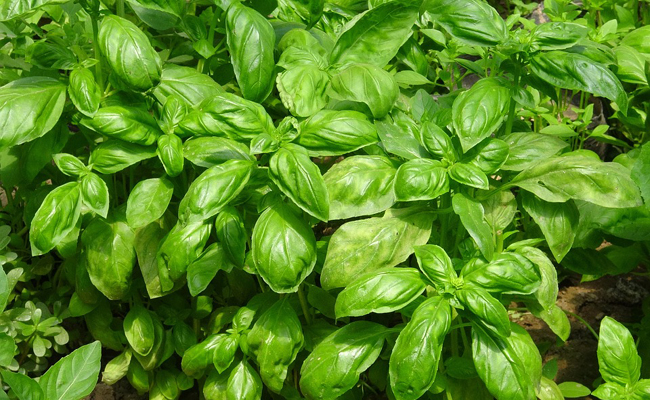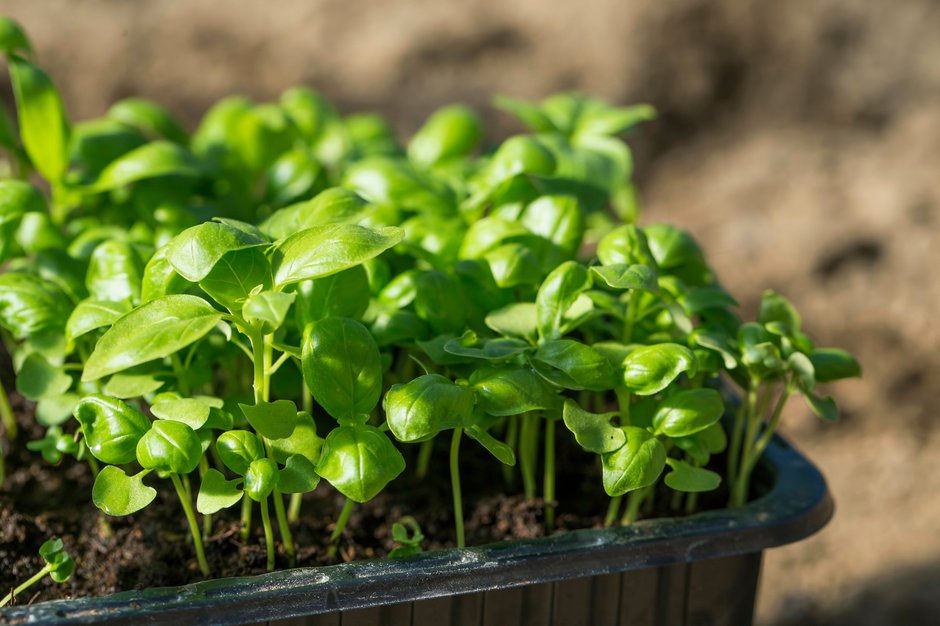
Growing Your Own Basil At home
Steps to plant Basil
Commence the basil-growing adventure with an awareness of the optimal planting time – basil thrives in warm temperatures, making June an ideal month for initiation. The selection of pots is crucial; opt for containers with a diameter of 5-7 centimeters, not only for the aesthetic appeal of flourishing flowers but also to ensure there’s ample room between leaves, particularly when growing basil indoors. Soil preparation is the foundation of success. Fill the chosen pots with moist potting soil, ensuring proper drainage by leaving the containers half-filled. Timing is of the essence here; choose a moment when the weather is warm but not excessively hot or cold, as the goal is to keep the plant roots cool.


Seed Planting stage
Moving on to the seed-planting stage, gently press basil seeds into the composted surface and cover them with an additional layer of compost. Strategic placement of the containers in a sunny spot is crucial for fostering optimal growth. Once the first signs of sprouting occur, the delicate process of nurturing the seedlings begins. Initially, cover the pots with cling film to create a protective environment.
As the seedlings emerge, removing this layer becomes paramount to allow adequate air circulation and light exposure. To enhance moisture absorption and stimulate robust growth, place the pots in shallow dishes filled with water.
Around the 14-day mark, the fruits of your labor should materialize as seedlings emerge from the soil. Exercise patience for an additional 3 weeks, and then undertake the task of trimming away the weaker seedlings, leaving behind the healthiest in each pot.
The subsequent phase involves transplanting these thriving seedlings. If opting for larger pots, choose containers with a minimum diameter of 10 centimeters. Alternatively, if an outdoor basil haven is your preference, ensure the selected garden spot receives ample sunlight for robust growth.
Indoor and Outdoor Basil Growth
Indoor basil caretakers should be mindful of positioning the pots near windows facing south to guarantee sufficient sunlight exposure. For those venturing into the outdoors with their basil plants, a note of caution: the location matters significantly. Choose an outdoor spot that receives copious amounts of sunlight to fortify the plants.
The final steps in this basil-growing saga involve the delicate removal of seedlings from their pots and their placement in holes measuring at least 1 centimeter wide. This is a delicate process, demanding a gentle touch to avoid damaging the roots. Once nestled in their new homes, cover the basil plants with soil, pat down gently, and provide a generous watering.
How to Propagate basil ?
Transitioning to the art of basil propagation adds another layer to the gardening experience. To achieve success in propagating basil, factors like well-drained soil with a neutral pH come into play. While organic compost is beneficial, moderation is key to avoid compromising the basil’s distinct flavor and aroma. Adequate sunlight remains a non-negotiable requirement, with a minimum of 6 hours of direct sun daily, though precautions are necessary to shield the leaves from midday exposure, which can lead to burn injuries.
In terms of watering, the delicate balance involves maintaining consistent moisture without overdoing it. Focus on watering the base of the plant rather than the leaves for optimal results. Considering the mature height of basil plants (12-24 inches), spacing becomes a crucial consideration, with a minimum of 16 inches apart in pots or garden beds. Basil, known for its compatibility with various companion plants, finds a delightful partner in tomatoes. If opting for this pairing, ensure that the neighboring tomato plant shares the same water and light requirements as basil to foster a harmonious coexistence.


